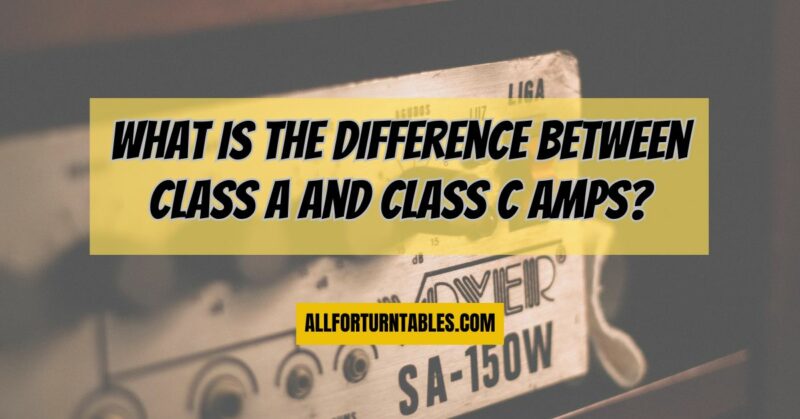When it comes to amplifiers, the world of audio can be a bit complex. Two common types, Class A and Class C amplifiers, serve different purposes and have distinct characteristics. In this beginner-friendly guide, designed for those aged 18-38, we’ll explore the differences between Class A and Class C amplifiers, their respective uses, potential disadvantages, and whether Class A amps are truly superior.
What Are Class C Amplifiers Used For?
Class C amplifiers are primarily used in applications where efficiency and linearity are not critical factors. They’re often employed in radio frequency (RF) and microwave circuits. Some common uses include:
- Transmitters: Class C amplifiers are found in RF transmitters, such as those used in radio broadcasting or wireless communication systems.
- RF Signal Generators: They are used in RF signal generators that produce high-frequency signals for testing and calibration purposes.
- Radar Systems: Class C amplifiers are employed in radar systems to amplify the RF signals used for detection and ranging.
- RF Power Amplifiers: They can be used in RF power amplifiers for industrial applications like welding or plasma generation.
What Is a Class C Amp?
Class C amplifiers are a type of electronic amplifier that operates in a non-linear mode. Unlike Class A or Class AB amplifiers, which aim for high linearity, Class C amplifiers are designed for maximum efficiency.
Here’s how they work:
- Non-Linear Operation: Class C amplifiers conduct only during a portion of the input waveform, resulting in significant distortion.
- High Efficiency: They are highly efficient because they spend most of the time in a non-conductive state, minimizing power dissipation.
- High-Frequency Applications: Class C amplifiers are best suited for high-frequency applications, where efficiency is crucial, and distortion can be tolerated.
What Are the Disadvantages of Class C Amps?
While Class C amplifiers excel in efficiency, they have notable disadvantages:
- Distortion: They produce significant distortion due to their non-linear operation, making them unsuitable for audio amplification.
- Limited Application: Class C amplifiers are specialized components designed for high-frequency applications. They are not suitable for general-purpose audio amplification.
- Complex Tuning: Tuning and matching Class C amplifiers can be challenging due to their non-linear behavior.
- Not for Hi-Fi Audio: They are not designed for high-fidelity (hi-fi) audio applications, where clean and linear amplification is essential.
Are Class A Amps Better?
Whether Class A amplifiers are “better” depends on your specific needs:
Pros of Class A Amplifiers:
- High Fidelity: Class A amplifiers offer exceptional linearity and low distortion, making them ideal for high-fidelity audio applications.
- Low Interference: They have low crossover distortion and minimal interference, resulting in clean and pure sound.
- Consistent Biasing: Class A amplifiers operate with a constant bias current, ensuring that transistors are always active.
Cons of Class A Amplifiers:
- Inefficiency: Class A amplifiers are inefficient and generate a significant amount of heat because transistors are always conducting.
- Limited Power: They typically provide lower output power compared to other amplifier classes.
- Heat Generation: The constant current flow leads to high heat generation, which can require substantial heat sinks.
In conclusion, Class C amplifiers are specialized components designed for high-frequency applications, such as RF transmitters and radar systems, where efficiency is paramount. They are not suitable for audio amplification due to their non-linear operation and distortion. Whether Class A amplifiers are better depends on your specific audio needs. Class A amplifiers offer superior linearity and are perfect for hi-fi audio, but they are less efficient and generate more heat compared to Class C amplifiers. Ultimately, the choice between Class A and Class C amplifiers depends on your intended application and priorities for audio quality, efficiency, and heat management.


